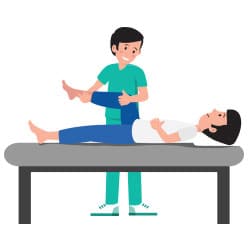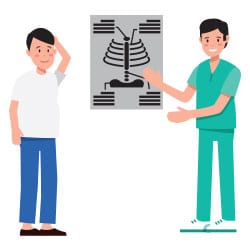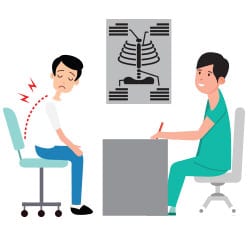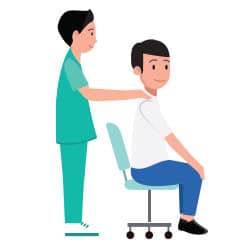Osteopathy is a patient-centred approach of healthcare. A first appointment generally lasts about 45 minutes to 1 hour to allow the osteopath adequate time for the following steps.
What happens during a consultation ?
WHAT HAPPENS DURING A CONSULTATION ?
Listening and questioning
The osteopath will ask questions about your condition, your general health, other medical care you are receiving or medication you are taking. He will ask for your medical history (any operation in the past, accident etc) and record this in your case notes. The information you provide will be confidential.
Examination
The osteopath will examine you properly with a few test movements, palpation and observation of your posture and mobility. In Malaysia we don’t require from our patients to undress to respect the local preferences.
Don’t be surprised if your osteopath checks your overall body, even if your pain is very localised. All the structures of your body are interrelated and interconnected. Thus, the origin of your pain might come from a different place in your body.
Your osteopath will also check for signs of serious conditions or any contraindication to an osteopathic treatment. He may advise you to see your GP or another relevant specialist.
After his examination, he will explain his findings to you and will work with you to prepare a treatment plan. You can ask questions at any time during the consultation.
 Treatment
Treatment
Treatment will follow, and the techniques used will depend on your age, activities, symptoms and wishes. The treatment consists in manual manipulations only, no machine, no medication.
At some points during the treatment, your osteopath might stop talking to focus with a specific technique. Some cranial technique for example are very subtle manipulations of the head. So you might have the impression that the osteopath’s hands are not moving. They are. Their sense of touch is extremely developed and the pressures applied can be very subtle sometimes, more obvious when required (for example cracking techniques).
 Advice and Follow-up
Advice and Follow-up
After the treatment, your osteopath will give you some advice regarding exercises to do, movements to avoid, rest required or not. Depending on your condition and how your body reacted during the treatment, the osteopath will advise on the date of a follow-up appointment. As a guide, acute symptoms (less than 3 months duration) may require 1 to 2 follow-ups; chronic pain (more than 6 months) may require 3 to 4 follow ups.
 After the treatment, at home
After the treatment, at home
During the treatment, your osteopath has adjusted a few elements of your body. The body will keep working on its own with this newly found balance. It is not unusual to sometimes feel sore in the first 24 to 48 hours after treatment, and to experience new sensations: your body is adapting, regulating itself. If it lasts more than 48 hours and creates discomfort, don’t hesitate to call the clinic to seek for advice.
Osteopathy usually does not work like a fast magic pill, and most of the time patients who come to osteopathy have tried pills before. Your body is a wonderful biological machine that took nearly 20 years to grow from birth to adult. It has its own habits, mechanisms, memory, daily life and “every-body” is unique. It means that everyone will not react to a treatment the same way, or heal with the same pace. Sometimes osteopathy can unlock a blockage and make the pain go away quite fast, but it may also require more than one treatment before your condition is resolved, and you need to give your body the necessary time to adjust. That is why there can be several weeks between two treatments, or several months, and your osteopath will review your progress at each subsequent visit to advise on your treatment plan.


